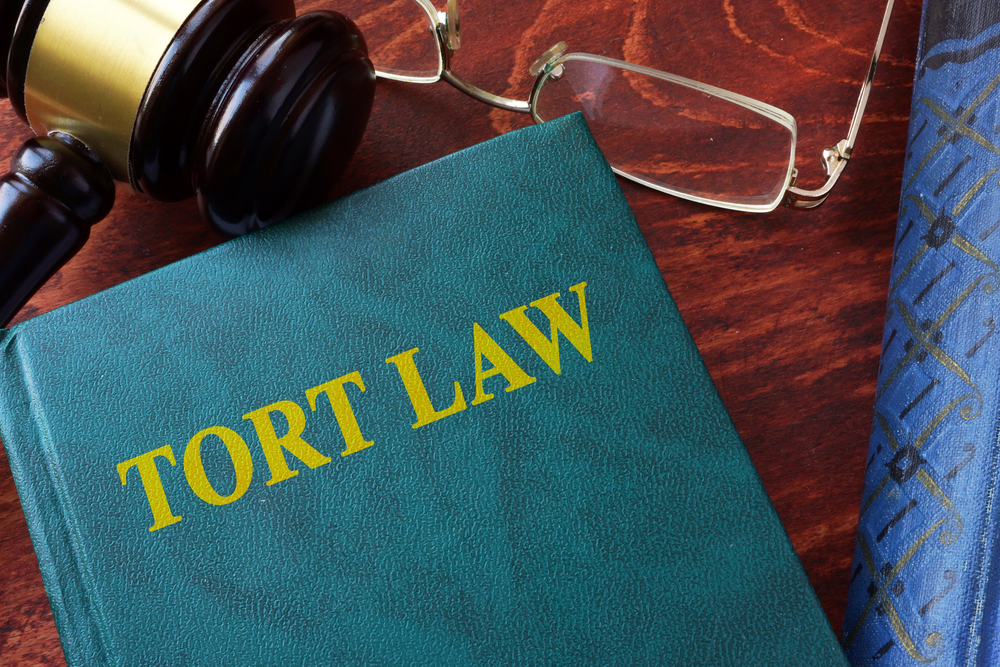 “Tort” isn’t exactly a term that comes up in everyday conversation. However, if you ever find yourself in the middle of a civil lawsuit, or if you’re consulting with a personal injury attorney, you might here the term “tort law” come up. What is tort law? This term actually covers a range of different areas in a legal practice, so we’ve provided the definition of tort law, as well as an introduction to the different types of torts below. Understanding where your case falls under tort law can help you to better prepare for court, so keep reading to learn more, and reach out to our personal injury attorneys for professional guidance and representation.
“Tort” isn’t exactly a term that comes up in everyday conversation. However, if you ever find yourself in the middle of a civil lawsuit, or if you’re consulting with a personal injury attorney, you might here the term “tort law” come up. What is tort law? This term actually covers a range of different areas in a legal practice, so we’ve provided the definition of tort law, as well as an introduction to the different types of torts below. Understanding where your case falls under tort law can help you to better prepare for court, so keep reading to learn more, and reach out to our personal injury attorneys for professional guidance and representation.
What Is Tort Law?
A tort is defined as “a wrongful act or an infringement of a right leading to civil legal liability.” In general, a tort occurs when one party inflicts some type of injury upon another, and the injured party decides to sue for damages. This injury can be a physical injury, economic injury, or even an injury to your reputation; all of these would fall under tort law, but we’ll get into the different types of torts in a moment.
First, it’s important to be aware that the harm doesn’t have to be intentional for it to be a tort, or for the responsible party to be held legally liable for the damages they cause. Tort lawsuits involve the injured party (the plaintiff) pursuing compensation from the person who caused the injury (the defendant). To be successful, tort cases need to prove the following:
Any tort case must have all four of these elements in order to be successful. Now that we’ve gone over the basics of tort law, let’s discuss the types of torts. Tort lawsuits are the biggest category of civil litigation and can encompass a wide range of personal injury cases. For the purposes of this article, we’ll discuss three main types of torts: intentional torts, negligence, and strict liability.
Intentional Torts
As implied by the name, an intentional tort occurs when a person or party purposely engages in behavior that causes some type of injury to another person. The most common example of an intentional tort is physical assault or battery, when one person strikes another intentionally.
Intentional torts can often also lead to criminal cases, but it’s important to note that the injured party can still pursue civil litigation, even if criminal charges are being pursued as well. While a criminal case can bring justice to the injured party by ensuring the person who harmed them receives a just punishment, that criminal case does not provide financial compensation for medical bills or other expenses the injured person may have incurred as a result of the injury. Pursuing a personal injury lawsuit under tort law can provide victims with the financial compensation they deserve, in addition to seeing the person who harmed them being punished by the law.
Negligence
Unlike intentional torts, negligence cases occur when a person fails to act with sufficient care, and another person is injured as a result. Negligence is by far the most common type of tort that leads to personal injury lawsuits, in part because they encompass such a wide range of injuries. Examples of personal injuries that fall under negligence torts include:
In most of these types of injuries, the injury is not caused by the deliberate intent to do harm, but by a failure to reduce the risk of harm to others. For example, a driver who is speeding isn’t usually expecting to hurt anyone; however, their choice to speed is careless, and any harm that results from that choice would be a negligence tort. Similarly, a property owner who fails to properly maintain their home doesn’t expect any harm to come of their decision, but if an injury does occur, they could be held liable for their negligence.
Strict Liability
The last type of tort is strict liability, which refers to cases where the responsibility for an injury can be placed on the defendant without requiring proof of direct fault or negligence. In essence, even if the responsible party took every reasonable precaution and did not harm them intentionally, they can still be held liable if harm occurred. The two most common examples of this are dog bites and defective products. Even if a dog owner takes every reasonable precaution to contain their dog and prevent injuries, if the dog escapes their yard and attacks someone, the dog owner is still responsible under strict liability.
We recognize that tort law can be overwhelmingly complex, so we invite you to contact The Harr Law Firm today to get expert guidance and support in navigating your case and determining which area of tort it would fall under. Call now to schedule a consultation.